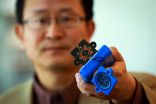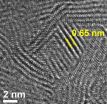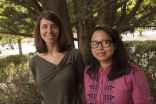(Press-News.org) Los Angeles, CA (November 4, 2014) With so much attention to curriculum and teaching skills to improve student achievement, it may come as a surprise that something as simple as how a classroom looks could actually make a difference in how students learn. A new analysis finds that the design and aesthetics of school buildings and classrooms has surprising power to impact student learning and success. The paper is published today in the inaugural issue of Policy Insights from the Behavioral and Brain Sciences (PIBBS).
Surveying the latest scientific research, Sapna Cheryan, Sianna Ziegler, Victoria Plaut, and Andrew Meltzoff outlined the current state of U.S. classroom design and developed a set of recommendations to facilitate student learning and success. Improvements to the structural environment could be especially beneficial for schools with students from lower income families. For example:
Lighting: Students exposed to more natural light perform better than students who are not; however, according to the National Center for Education Statistics (2014), 16% of schools with permanent buildings and 28% of schools with portable facilities have unsatisfactory natural lighting.
Temperature: The optimal temperature range for learning is between 68 and 74 degrees F. Sixteen percent of schools with permanent buildings and 12% of schools with portable facilities have unsatisfactory heating.
What a classroom looks like, including how it is decorated, can also make a difference in student achievement. Symbols in the classroom can inadvertently signal who is valued. For example:
Classroom objects that depict achievement of groups traditionally disadvantaged in education (e.g. photographs of women scientists) can improve performance for these groups.
Classroom objects appealing to only some students (e.g. too many science fiction objects in a computer science classroom) prevent students who do not identify with those objects from enrolling in those courses.
"Token" symbols that represent a group (e.g. American Indian mascots) can cause students from those groups to express lower self-esteem.
The researchers wrote, "For students to learn to their full potential, the classroom environment must be of minimum structural quality and contain cues signaling that all students are valued learners."
These findings were adopted by the University of Washington Computer Science & Engineering department to communicate a broadly welcoming environment. They redesigned their building and computer lab by repainting and selecting appealing art pieces. Students and faculty reacted positively to the new environment as a place where a greater diversity of students feel welcome and can be successful.
The researchers concluded with the implications of this research for policymakers and school administrators:
"This research should be used in developing and implementing education policy for state-level boards, local school boards, school and program administrators, and teachers. Organizations that promote standards for certification and accreditation might encourage training on classroom environments. School administrators might provide venues for teachers to share information on school environments."
INFORMATION:
The new PIBBS journal includes 33 articles, published today, on pressing social issues as they relate to policy. The following five articles relate to policy improvements for education. Full-text copies can be accessed by emailing camille.gamboa@sagepub.com.
"Designing Classrooms to Maximize Student Achievement" by Sapna Cheryan, Sianna A. Ziegler, Victoria C. Plaut, and Andrew N. Meltzoff
"Educational Theory, Practice, and Policy and the Wisdom of Social Psychology" by Geoffrey L. Cohen and Julio Garcia
"Girls and Women in Science, Technology, Engineering, and Mathematics: STEMing the Tide and Broadening Participation in STEM Careers" by Nilanjana Dasgupta and Jane G. Stout
"Stereotype Threat in School and at Work: Putting Science Into Practice" by Toni Schmader and William M. Hall
"Ostracism and Public Policy" by Kipling D. Williams and Steve A. Nida
SAGE is a leading international publisher of journals, books, and electronic media for academic, educational, and professional markets. Since 1965, SAGE has helped inform and educate a global community of scholars, practitioners, researchers, and students spanning a wide range of subject areas including business, humanities, social sciences, and science, technology, and medicine. An independent company, SAGE has principal offices in Los Angeles, London, New Delhi, Singapore and Washington DC. http://www.sagepublications.com
Policy Insights from the Behavioral and Brain Sciences is a new annual publication that presents original research and scientific reviews relevant to public policy. This annual will
Allow scientists to share research that can help build sound policies.
Allow policymakers to provide feedback to the scientific community regarding research that could address societal challenges.
Encourage the scientific community to build models that seriously consider implementation to address the needs of society.
SALT LAKE CITY, Nov. 4, 2014 – University of Utah engineers have developed a new type of carbon nanotube material for handheld sensors that will be quicker and better at sniffing out explosives, deadly gases and illegal drugs.
A carbon nanotube is a cylindrical material that is a hexagonal or six-sided array of carbon atoms rolled up into a tube. Carbon nanotubes are known for their strength and high electrical conductivity and are used in products from baseball bats and other sports equipment to lithium-ion batteries and touchscreen computer displays.
Vaporsens, ...
PROVIDENCE, R.I. [Brown University] — We celebrate our triumphs over adversity, but let's face it: We'd rather not experience difficulty at all. A new study ties that behavioral inclination to learning: When researchers added a bit of conflict to make a learning task more difficult, that additional conflict biased learning by reducing the influence of reward and increasing the influence of aversion to punishment.
This newly found relationship between conflict and reinforcement learning suggests that the circuits in the frontal cortex that calculate the degree of ...
HOUSTON – (Nov. 4, 2014) – Rice University scientists who want to gain an edge in energy production and storage report they have found it in molybdenum disulfide.
The Rice lab of chemist James Tour has turned molybdenum disulfide's two-dimensional form into a nanoporous film that can catalyze the production of hydrogen or be used for energy storage.
The versatile chemical compound classified as a dichalcogenide is inert along its flat sides, but previous studies determined the material's edges are highly efficient catalysts for hydrogen evolution reaction ...
HOUSTON – (Nov. 4, 2014) – A majority of Madagascar's 101 species of lemurs are threatened with extinction, and that could have serious consequences for the rainforests they call home. A new study by Rice University researchers shows the positive impacts lemurs can have on rainforest tree populations, which raises concerns about the potential impact their disappearance could have on the region's rich biodiversity.
A large proportion of trees in Madagascar's rainforest have fruits eaten by lemurs. Lemurs in turn disperse the seeds of their fruit trees throughout ...
OAK BROOK, Ill. – Researchers using coronary computed tomography angiography (CCTA) have found a close association between high-risk coronary artery plaque and a common liver disease. The study, published online in the journal Radiology, found that a single CT exam can detect both conditions.
Previous research has shown that CCTA can detect high-risk coronary artery plaque, or plaque prone to life-threatening ruptures. For the new study, researchers looked at associations between high-risk plaque and non-alcoholic fatty liver disease (NAFLD), a condition characterized ...
Over eighty percent of breast cancer patients in the United States use complementary therapies following a breast cancer diagnosis, but there has been little science-based guidance to inform clinicians and patients about their safety and effectiveness. In newly published guidelines from the Society for Integrative Oncology, researchers at Columbia University's Mailman School of Public Health and the Herbert Irving Comprehensive Cancer Center with colleagues at MD Anderson Cancer Center, University of Michigan, Memorial Sloan Kettering, and other institutions in the U.S. ...
PHILADELPHIA - Two new studies from the Abramson Cancer Center and the Perelman School of Medicine at the University of Pennsylvania offer hope for breast cancer survivors struggling with cancer-related pain and swelling, and point to ways to enhance muscular strength and body image. The studies appear in a first of its kind monograph from the Journal of the National Cancer Institute Monographs focusing on integrative oncology, which combines a variety of therapies, some non-traditional, for maximum benefit to cancer patients.
In the first study, A Hybrid Effectiveness-Implementation ...
Chestnut Hill, MA (November 4, 2014): Whether it's politics in the United States or violent conflict in the Mideast, the roots of the vitriol and intractability begin to grow not from a hatred of the other side, but from a misunderstanding of what's motivating the other side. According to a new study co-authored by a Boston College neuroscientist, not only does this misunderstanding pose a barrier to solutions, but it can be corrected through financial incentives.
The research involved the participation of almost 3,000 people: Israelis and Palestinians in the Mideast, ...
Over half the smokers using the Liverpool Stop Smoking Service have tried electronic cigarettes (51.3 per cent). Of these, nearly half had used them within the past month and are considered current users (45.5 per cent).
The data* – presented at the National Cancer Research Institute (NCRI) Cancer Conference in Liverpool today (Tuesday) – also highlights that smokers are more likely to try e-cigarettes if they feel more confident that the products are safer than tobacco smoking.
Researchers from the University of Liverpool quizzed more than 320 smokers from ...
Swallowing a sponge on a string could replace traditional endoscopy as an equally effective but less invasive way of diagnosing a condition that can be a forerunner of oesophageal cancer.
The results of a Cancer Research UK trial involving more than 1,000 people are being presented today (Tuesday) at the National Cancer Research Institute's annual conference in Liverpool.
The trial invited more than 600 patients with Barrett's Oesophagus – a condition that can sometimes lead to oesophageal cancer – to swallow the Cytosponge and to undergo an endoscopy. ...


